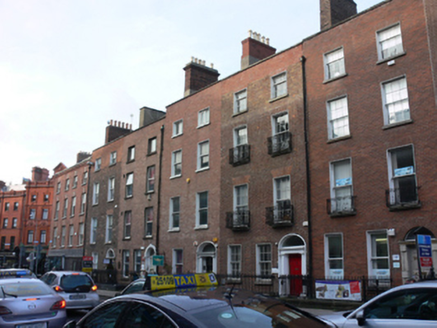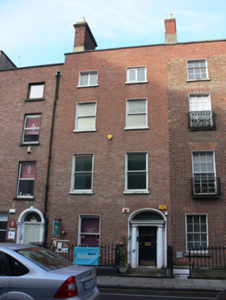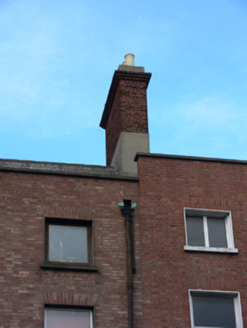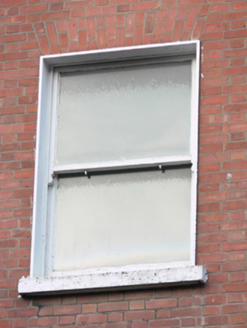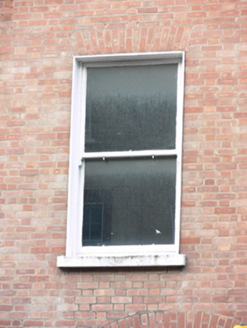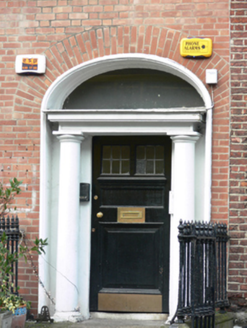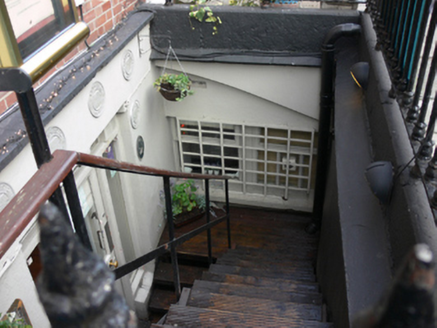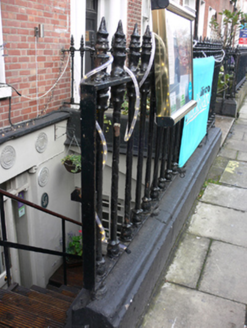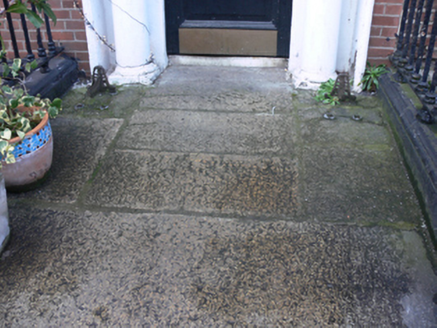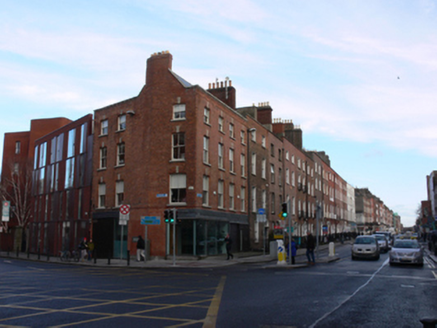Survey Data
Reg No
50020455
Rating
Regional
Categories of Special Interest
Architectural, Artistic, Historical, Social
Original Use
House
In Use As
Office
Date
1760 - 1780
Coordinates
316484, 233785
Date Recorded
24/03/2015
Date Updated
--/--/--
Description
Terraced two-bay four-storey former house over basement, built c.1770, having return to rear (north-east) elevation. Subsequently refronted, now in use as offices and restaurant. M-profile pitched slate roof concealed behind red brick parapet with render coping, red brick chimneystacks having clay pots. Red brick, laid in Flemish bond, to walls, smooth render to basement. Square-headed window openings with masonry sills, raised render reveals, one-over-one pane timber sliding sash windows and some replacement uPVC windows. Later segmental-headed door opening having moulded masonry surround, masonry Doric entablature, plain fanlight and part-glazed timber panelled door. Cast-iron railings and matching gate on masonry plinth enclosing basement area. Set back from Clare Street, approached by nosed granite step with cast-iron bootscrapes.
Appraisal
Clare Street was developed c.1762 by John Ensor for the sixth Viscount Fitzwilliam. This house, although subsquently refronted, has retained its Georgian proportions, contributing to the coherence of the streetscape. The later restrained doorcase adds elegance to the composition. The cast-iron railings enclosing the basement area add to the historic character of both building and streetscape. In the 1860s it was occupied by John Andrew Baker, a surgeon and dentist, who may have been connected to the nearby hospital and health facilities on Lincoln Place.
